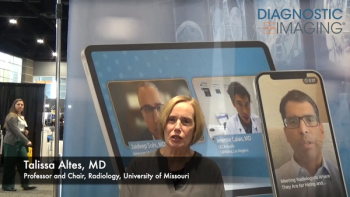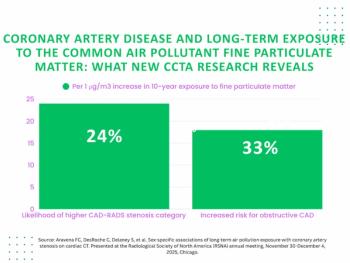
Method generates prefetch rules automatically
The promise of better operational efficiency is a principal attraction of PACS. Image prefetching is one key to achieving this goal. "The linchpin for achieving the desired operational efficiency is the enabling of an automated, clinically relevant
The promise of better operational efficiency is a principal attraction of PACS. Image prefetching is one key to achieving this goal.
"The linchpin for achieving the desired operational efficiency is the enabling of an automated, clinically relevant prefetch process for comparison studies from the digital archives," said consultant John Donnelly of IntePro Solutions in a 2001 paper (J Digit Imaging 2001 Jun 14(2 Suppl 1):135-139).
A new report (J Digit Imaging 2003 Jan 21 [epub ahead of print]) explores an inductive method for automatic generation of referring physician prefetch rules for PACS.
"Image prefetching on PACS is a method to improve response time at image display terminals," said Yasuhiko Okura, a graduate student in the School of Medicine at Osaka University in Japan. "It is difficult for us to compose efficient rules to retrieve images from PACS storage by prefetching, however, especially for hospital-wide PACS."
Okura and colleagues developed an inductive method to compose prefetch rules from practical data that were obtained in a hospital using a decision tree algorithm.
"Our method enables us to compose efficient prefetching rules automatically," Okura said. "In addition, since our method is based on the histories of image request on terminals, it will work well on any PACS."
Okura first acquired one month log's data from the Osaka University Hospital PACS, including records of image requests from all terminals (323,993), exam histories on all patients (643,797), and HIS consultation records (58,617).
He then constructed a condition table in terms of:
? the most recent exam modality
? days from the most recent exam
? number of exams
This allowed him to devise rules to predict consultation cases in which images will be requested using for decision tree induction algorisms (CHAID, E-CHAID, CART, and QUEST). The most recent series of exams was then selected in order to prefetch images of each patient of predicted consultation.
Using the four algorisms, the average prefetch success rates were 0.513, 0.520, 0.406, and 0.496, respectively.
"Our method could derive prefetch rules where one half of image requests at a consultation could be prefetched successfully," Okura said. "Also, we were able to avoid prefetching large volume data that would not be requested."
Since this method is based on histories of image requests, however, each individual hospital will need to generated its own rules.
Newsletter
Stay at the forefront of radiology with the Diagnostic Imaging newsletter, delivering the latest news, clinical insights, and imaging advancements for today’s radiologists.




























